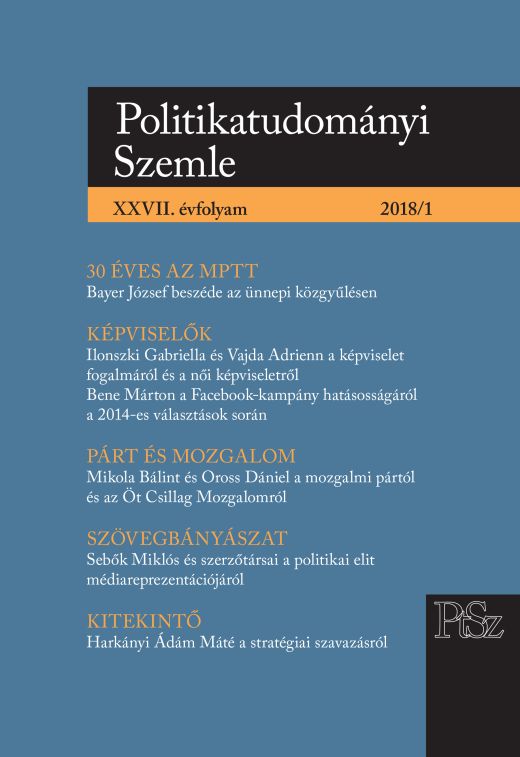Egy pártszervezet két arca. A mozgalmi pártok belső feszültségei az Öt Csillag Mozgalom példáján keresztül
The two faces of a party organisation: The inner tensions of movement parties illustrated by the example of the Five Star Movement
Author(s): Bálint Mikola, Dániel OrossSubject(s): Politics, Political behavior, Politics and society
Published by: MTA Politikai Tudományi Intézete
Keywords: populism; Italian party politics; direct democracy; movement parties; Five Star Movement
Summary/Abstract: Following the disintegration of the Italian party system and in parallel with the global financial crisis, the populist Five Star Movement became a dominant player on the Italian political palette. Not only power relations within the Parliament have changed, but a new party model has also appeared on the scene, whose viability generated a vigorous scientific debate. In light of the theory of Herbert Kitschelt’s movement parties (Kitschelt, 2006) and the „three faces” theory of Katz and Mair (1993), the paper examines the internal organizational tensions that can derive from a party model in which the party’s individual components are only loosely defined. The analysis, based on party documents and 19 semi-structured qualitative interviews with party representatives, demonstrates that the coexistence of a charismatic leader and autonomous local organizations without intermediary mechanisms is sustainable only to a limited extent, as in many cases it leads to the escalation of intraorganizational conflicts. The study also points to the inherent internal tensions of movement parties by presenting the Five Star Movement, questioning the sustainability of similar organizations and highlighting the challenges concerning their governmental capacities.
Journal: Politikatudományi Szemle
- Issue Year: XXVII/2018
- Issue No: 1
- Page Range: 65-87
- Page Count: 23
- Language: Hungarian

